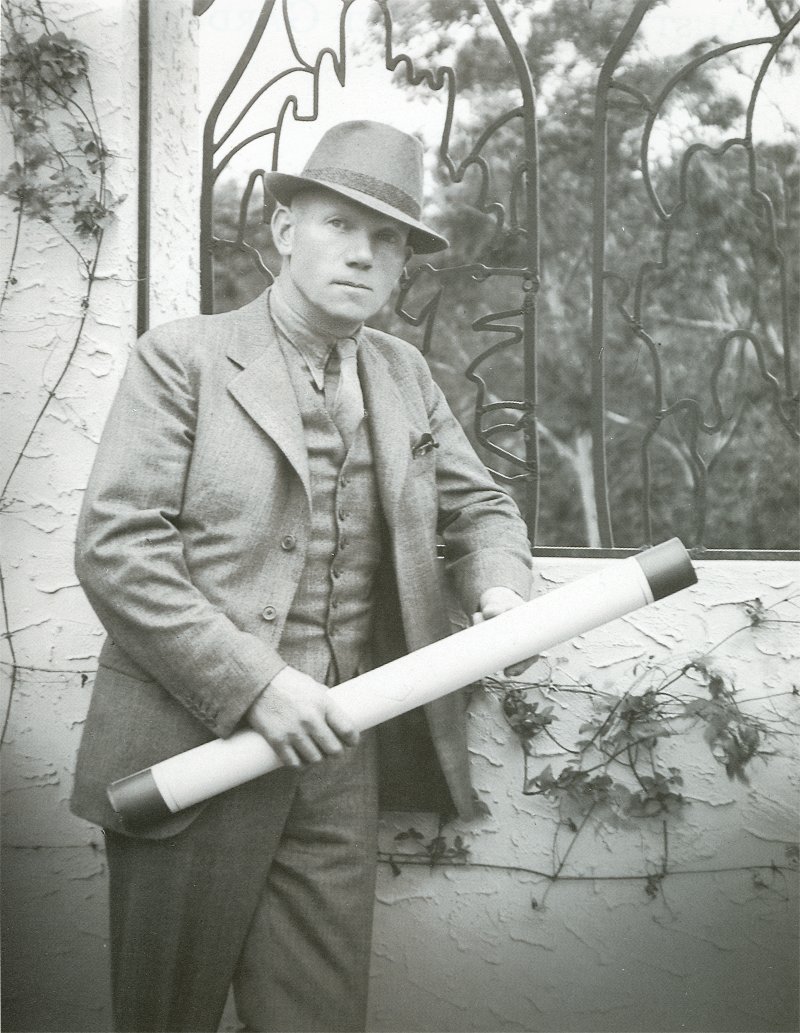About Paul Sorensen
Paul Sorensen (1891 - 1983) was born in Copenhagen and trained in horticulture at Horsholm Tekniske Skole. He honed his skills working with leading landscape designers on large estates in Denmark and Switzerland; however, the impending war cut his time in Europe short. After coming to Australia, he developed his own distinctive landscape style, ethos and technique in gardens across NSW – many of which still stand 100 years later.
Location
Category
Share and save

Paul Sorensen trained in horticulture in Copenhagen, working with leading landscape designers and contractors in Denmark and Switzerland. In 1915, he immigrated to Australia due to his pacifism and horror of war. He settled in the Blue Mountains in 1917, initially working as a gardener, but remained interested in design. He set up two successive nurseries in Katoomba and Leura, which stocked trees and shrubs imported from New Zealand, England and Europe. His wife and son both worked in the family business.
The ‘outside room’ designer
By the 1920s, Sorenson had begun designing and planting gardens for wealthy clients in the Blue Mountains area. His reputation began to grow, and he was increasingly commissioned to work further afield. Over the next 7 decades, Paul designed over 100 gardens, from Glen Innes in the far north to Cowra and Orange in the west, Wahroonga and Rushcutters’ Bay in the east and Wollongong and Canberra (ACT) in the south.
Often described as ‘outside rooms’, Sorenson’s gardens were foremost notable for their aesthetic values. He favoured large trees, shrubs and native plants. His designs were particularly distinctive for his mastery in the use of the dry-stone wall technique – and use of paving − combined with a skill in managing dramatic changes of levels in gardens. His signature feature was stone walling using local rock that may have been split or broken to shape, but not noticeably cut with straight edges.
Uniquely Australian designs
Sorensen was also integral to developing new techniques and approaches to landscape design specific to the Australian context. He developed special techniques for enhancing the sandy soils of the Blue Mountains, so that these soils could support luxuriant gardens. He also excelled at pruning trees, using theatrical gestures to bring out the ‘spirit’ of a tree.
Sorenson’s gardens blended his European sensibilities with uniquely Australian references, distinguishing them from the typical grand gardens of the time and paving the way for later generations of landscape design. Sorensen had a rare combination of skills, standing out as a master gardener because his expertise was not limited to one facet of gardening. He was not only a skilful designer but also an expert in garden construction. Many of his gardens still survive and several are heritage listed (see the State Heritage Inventory for more information).
Some of Sorensen’s notable commissions:
- assisting Lady Fairfax (widow of the Sydney newspaper magnate) with the garden of ‘Sospel’ at Leura
- redesigning and expanding an existing garden at ‘Mahratta’ Wahroonga in 1925 for the owner of the mercantile firm Samuel Allen & Sons
- designing the garden at ‘Everglades’ in Leura for its owner Henri van de Velde. It is considered a prime example of modernism in Australian garden design
References
- ‘About Paul Sorensen’, thebraes: Cool Climate Garden in Leura
- Colleen Morris, 'Sorensen, Paul Edwin Bielenberg (1891–1983)', Australian Dictionary of Biography, National Centre of Biography, Australian National University
- ‘New South Wales Toy & Railway Museum, Leuralla − Display Garden by Paul Sorensen’
- ‘Paul Sorensen and the Gleniffer Brae Gardens’, University of Wollongong
- ‘Paul Sorensen’, Monument Australia
- Richard Ratcliffe, Australia's master gardener - Paul Sorensen and his gardens. Kenthurst, N.S.W.: Kangaroo Press, 1990.
- State Heritage Inventory
- https://www.researchgate.net/publication/312069896_Paul_Sorensen_in_the_Southern_Highlands_and_Illawarra_NSW
- Stuart Read: Paul Sorensen in the Southern Highlands and Illawarra
